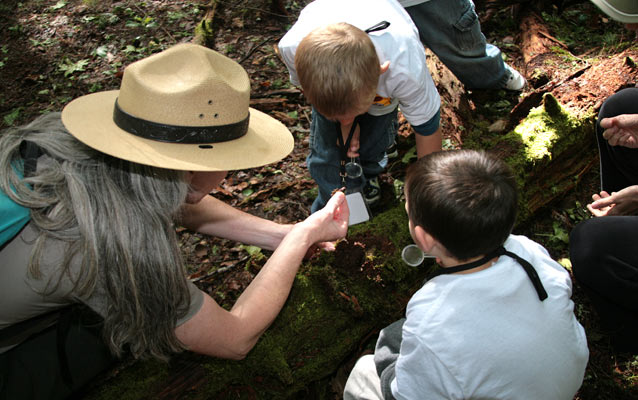Lesson Plan

NPS Photo
- Grade Level:
- Pre-Kindergarten-First Grade
- Subject:
- Biodiversity, Environment
- Duration:
- 30 minutes
- Group Size:
- Up to 60
- Setting:
- outdoors
- National/State Standards:
- SCIENCE
Physical Properties
K.P.2.1
K.P.2.2
Animal Characteristics
EX K.P.2.2
K.L.1.1 - Keywords:
- Great Smoky Mountains National Park, kindergarten, senses, animals, observation
Overview
Just as many exciting discoveries were made during the class trip to Great Smoky Mountains National Park, there are many places to explore within your school yard.This unit is broken into three parts. The overall unit involves a trip to the park and is accompanied by one preparation activity and two wrap-up activities. This is part 1 of the wrap up activity of the unit.
Objective(s)
1) Conduct a school yard inventory.
2) Compare and contrast their school yard findings with those from the National Park.
3) Use a magnifying glass to see small objects without damaging them.
Background
Teachers coming on the accompanying field trip should download our complete field trip packet that includes all of the lessons: Explore With Your Senses Pre-Site lesson, information and directions about the field trip and Wrap-up part 1 and 2 post site lesson.
Download the full Explore With Your Senses Field Trip packet (includes Preparation and Wrap-up lessons).
Materials
This lesson includes a worksheet for students to record their observations at school.
-
School Nature Detectives
Teaches students that through careful observation, there are many things waiting to be discovered. Download
Procedure
Step 1: Have the students use a magnifying glass to make an inventory in their school’s back yard.
Step 2: Compare the list with the items they found at Great Smoky Mountains National Park. Ask the students if the list is longer or shorter? Were any of the same types of items found? Is their school yard bigger of smaller than the national park?
Park Connections
Great Smoky Mountains National Park is home to over 17,000 known different types of animals and plants. Scientist are still learning about the different organisms that live in the park, sometimes by doing simple observation projects in small areas.
Additional Resources
Discover Life in America (DLIA) - www.dlia.org/
Vocabulary
observation, natureLast updated: April 14, 2015
